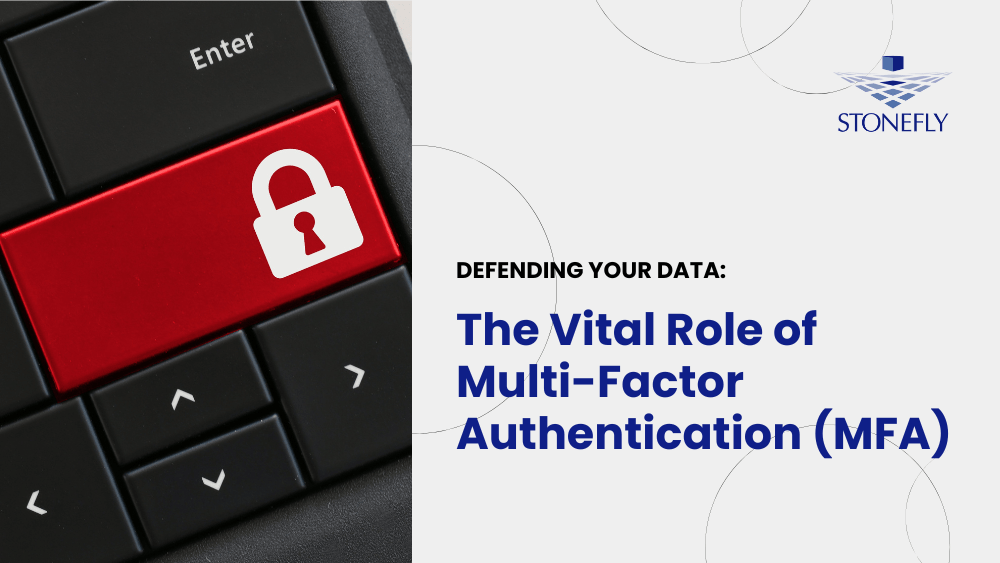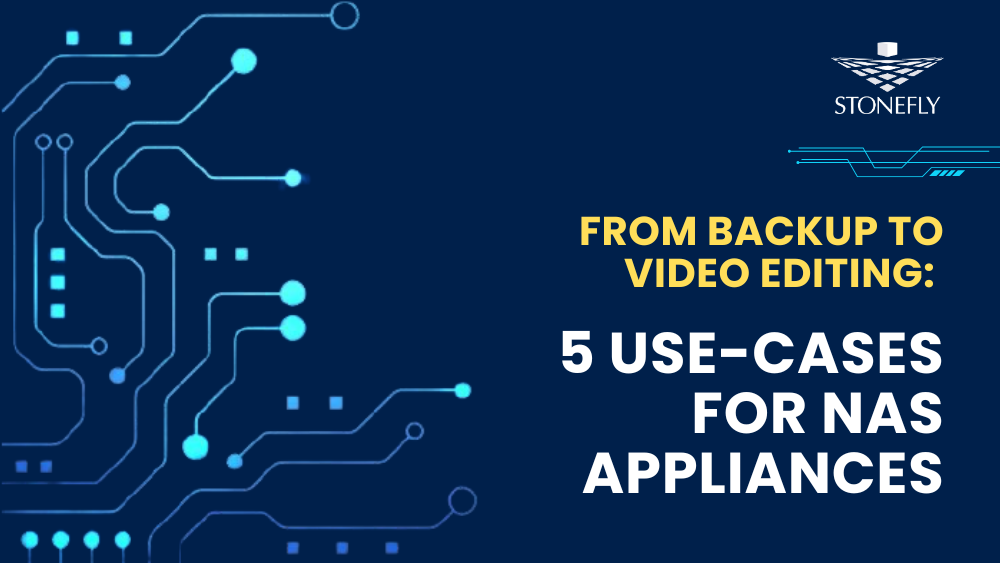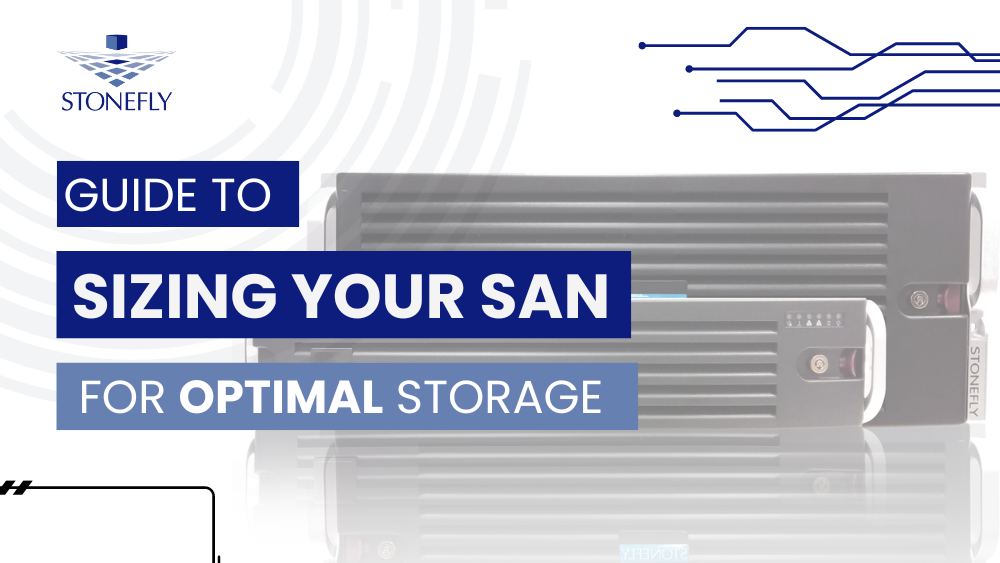This is the second article in a series of articles focused on exploring the hardware architecture of StoneFly’s innovative enterprise-grade data storage, and backup and Disaster Recovery (DR) solutions.
The first article in the series was about the integrated appliance hardware architecture. If you’re curious about the “storage in a box” or “DR site in a box” hardware, we highly recommend reading it.
In this article, we’ll be taking a closer look at the Dual Node Shared Nothing hardware configuration. To simplify your reading experience, here’s the table of contents for the article.
Dual Node Shared Nothing – “Clustered Appliances” Architecture
The Dual Node Shared Nothing hardware comprises of two clustered integrated appliance chassis. Each appliance in the cluster houses hardware independent and “shared nothing” processors, storage drives, power supplies and other key components. The data stored in one appliance is synchronously replicated over to the second appliance in the cluster.
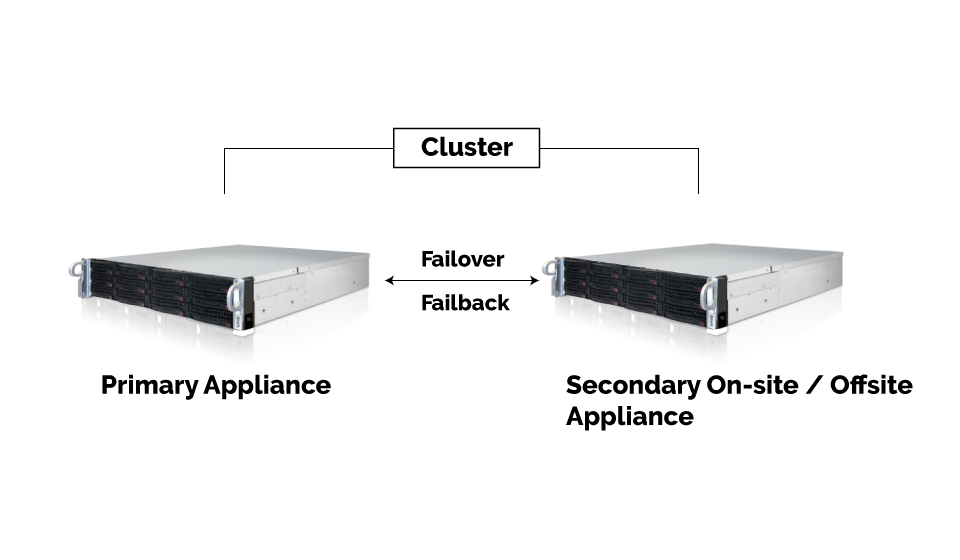
As opposed to the “storage in a box” experience of the integrated appliance hardware, the Dual Node Shared Nothing Hardware delivers redundancy and fault-tolerance for environments that cannot tolerate downtime or disruption.
This is what the hardware architecture of the Dual Node Shared Nothing Infrastructure looks like:

As mentioned earlier, two integrated appliances with hardware independent Storage Controllers (SCs) or HCI controller (if hyperconverged), RAID controllers, and storage drives are clustered together. This enables users to failover and failback from one appliance to the other, in the event of hardware failure.
StoneFly’s innovative technology enables users to setup the two nodes geographically apart as well as on-premises; thereby facilitating a variety of enterprise use-cases.
Shared Nothing Hardware Components
The Dual Node Shared Nothing architecture comprises of two integrated appliances. This goes without saying, that the hardware components supported by the integrated appliances are also supported by the Dual Node Shared Nothing systems.
For more information on our integrated appliances, we recommend reading the first blog in this series. To read the blog, click here: Data Center Hardware Overview: Integrated Appliance
Storage Controllers or HCI Controllers
Each integrated node in the Dual Node Shared Nothing configuration has a built-in Storage Controller (SC) or HCI controller (if hyperconverged).
The SC provides the management layer that users use to manage their storage resources and configure various data services such as snapshots, data replication, erasure coding, etc. This is also the part of the hardware where the Operating System (OS) runs.
For HCI controllers, the OS, the management software, and the hypervisor (VMware, Hyper-V, or Citrix) are also running on it.
Similarly, if the user has chosen one of StoneFly’s backup and DR solutions, the backup software is also running on this part of the backup and DR system.
On StoneFly HCI controllers the OS and the hypervisor run on dedicated NVMe, independent of storage.
This is a unique feature for all StoneFly Hyperconverged Infrastructure (HCI) solutions. It’s true for the integrated appliances, the Dual Node Shared Nothing hardware configuration, the scale out hardware configuration, the disaggregated configuration, and the totally disaggregated hardware infrastructure.
All StoneFly storage, backup and DR solutions come pre-configured with our patented and awarded StoneFusion OS.
To learn more about the software-defined storage solution, we recommend reading this blog: iSCSI, NAS, Hyperconverged: Manage All with Award-Winning Software
Did you know that you can purchase our StoneFusion OS as a standalone data management software? To learn more about the industry leading software-defined solution, contact us or book a demo.
Integrated RAID Controllers
With the exception of StoneFly SSO NAS appliances and the VSO NAS appliances, all StoneFly data storage and backup and DR appliances have built-in RAID controllers.
For the NAS systems, it’s an optional upgrade.
The integrated RAID controller enables users to setup fault-tolerance for each of the integrated appliance nodes within the Dual Node Shared Nothing hardware configuration. This create a robust system that remains functionally capable even when multiple drives fail.
With StoneFly technology and our software-defined storage solution, users can configure RAID 0, 1, 3, 5, 6, 10, 30, 50, and 60 with RAID cache battery backup.
Note: Supported RAID level depends on the available system memory.
For more information on RAID, click here: What is RAID (Redundant Array of Inexpensive Disks)?
Hot-Swappable Storage Drives
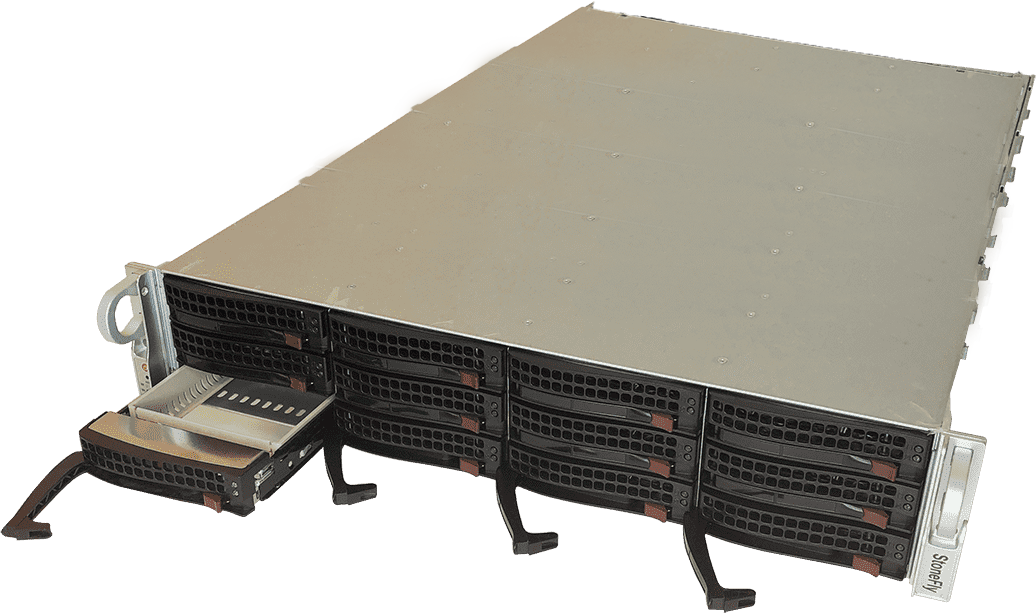
Similar to the integrated appliance hardware, the integrated appliance nodes in the Dual Node Shared Nothing hardware also have hot-swappable drive bays. It’s very easy to add, remove, or replace a storage drive.
The Dual Node Shared Nothing supports standard 3.5” 7200RPM, 10k, and 15k enterprise SAS, 2.5” SAS, and 3.5” 12Gb SSDs. The value-tier storage and backup and DR systems also support 3.5” and 2.5” SATA for cost-effective data storage.
For more information on supported storage drives, contact us.
The Dual Node Shared Nothing hardware can be configured as a pure SAS, pure SATA (value-tier) or an All-Flash data storage or backup & DR system. The hardware configuration also supports hybrid storage drive configuration that combines enterprise SAS or SATA (value-tier) and SSDs in a single storage system for an efficient multi-tiered storage experience.
For more information on tiered storage, we recommend reading our technical resource section: What is tiered storage?
Redundant Hot-Swappable Power Supplies
The power supplies are also hot-swappable. The process of replacement or repair is almost tool-less.
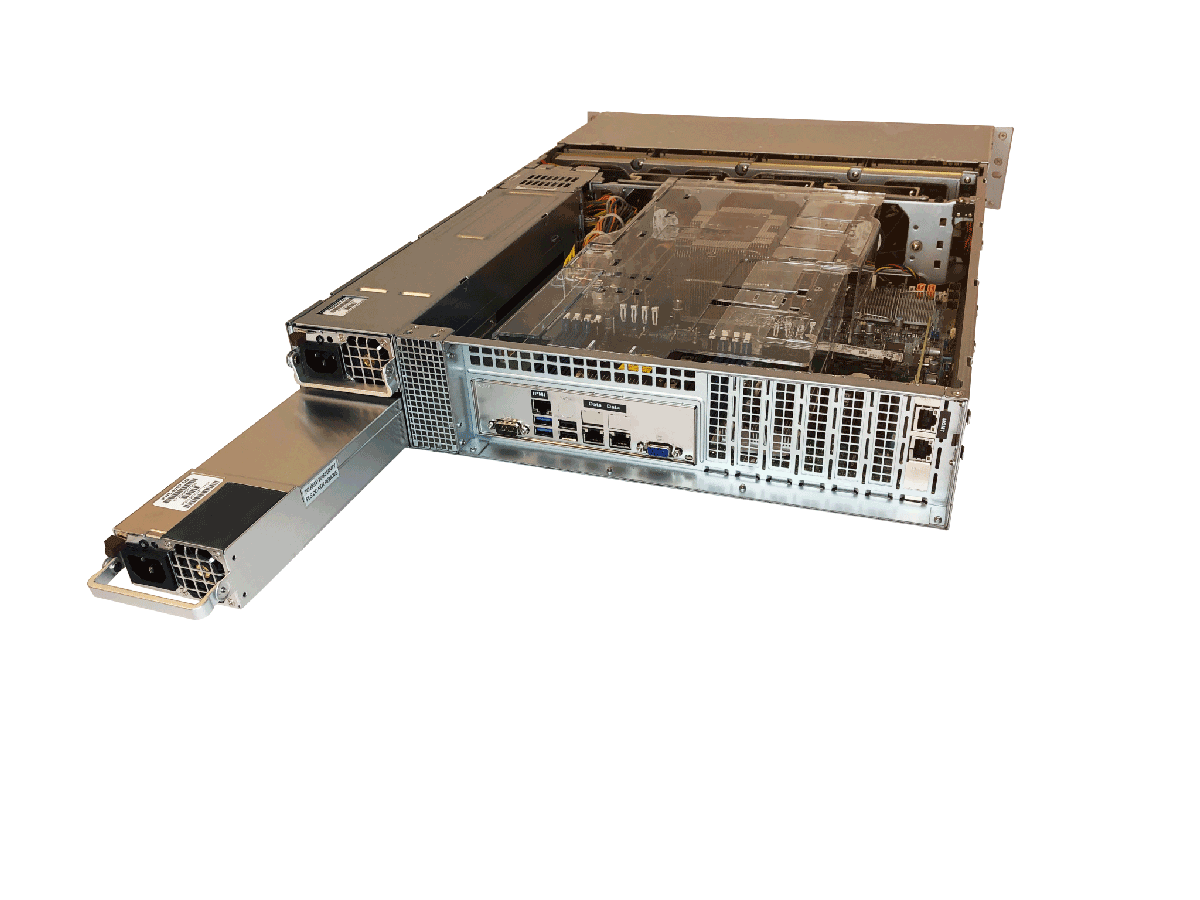
Each integrated node has redundant power supplies. This means that a node can continue to function even if one power supply fails. Furthermore, even if both power supplies fail, which is very unlikely, the other appliance continues to function and users never experience downtime or disruption.
Average Storage Capacities for the Dual Node Shared Nothing Appliances
We’ve discussed that the Dual Node Shared Nothing hardware configuration simply uses two integrated nodes clustered together to replicate the same volume of data on both appliances. Therefore, while the total storage capacity is doubled, the usable storage capacity for the Dual Node Shared Nothing hardware remains the same as the integrated appliance hardware.
Scale Up & Scale Out Capabilities of the Dual Node Shared Nothing Hardware
All StoneFly hardware appliances are dually scalable. The term dually scalable implies that our appliances can scale up and scale out.
Scale up or vertical scaling is the addition of storage capacity whereas scale out or horizontal scaling is the addition of performance and storage capacity simultaneously.
By adding storage expansion units, StoneFly customers can scale up their storage infrastructure. Our appliances enable users to start small, from a few terabytes, and scale up to petabytes of storage.
A fully populated 36-bay StoneFly appliance is capable of storing 4 petabytes of data (with expansion units)
Similarly, to add performance and storage capacity simultaneously, StoneFly customers can add more appliance nodes. Our storage and backup and DR solutions are also capable of scaling out to virtually unlimited number of appliance nodes for petabytes of storage capacities and proportional performance capabilities.
Now that we’ve developed an understanding of StoneFly’s Dual Node Shared Nothing hardware, its key components and its scalability, let’s look at the solutions the Dual Node Shared Nothing hardware configuration is available in.
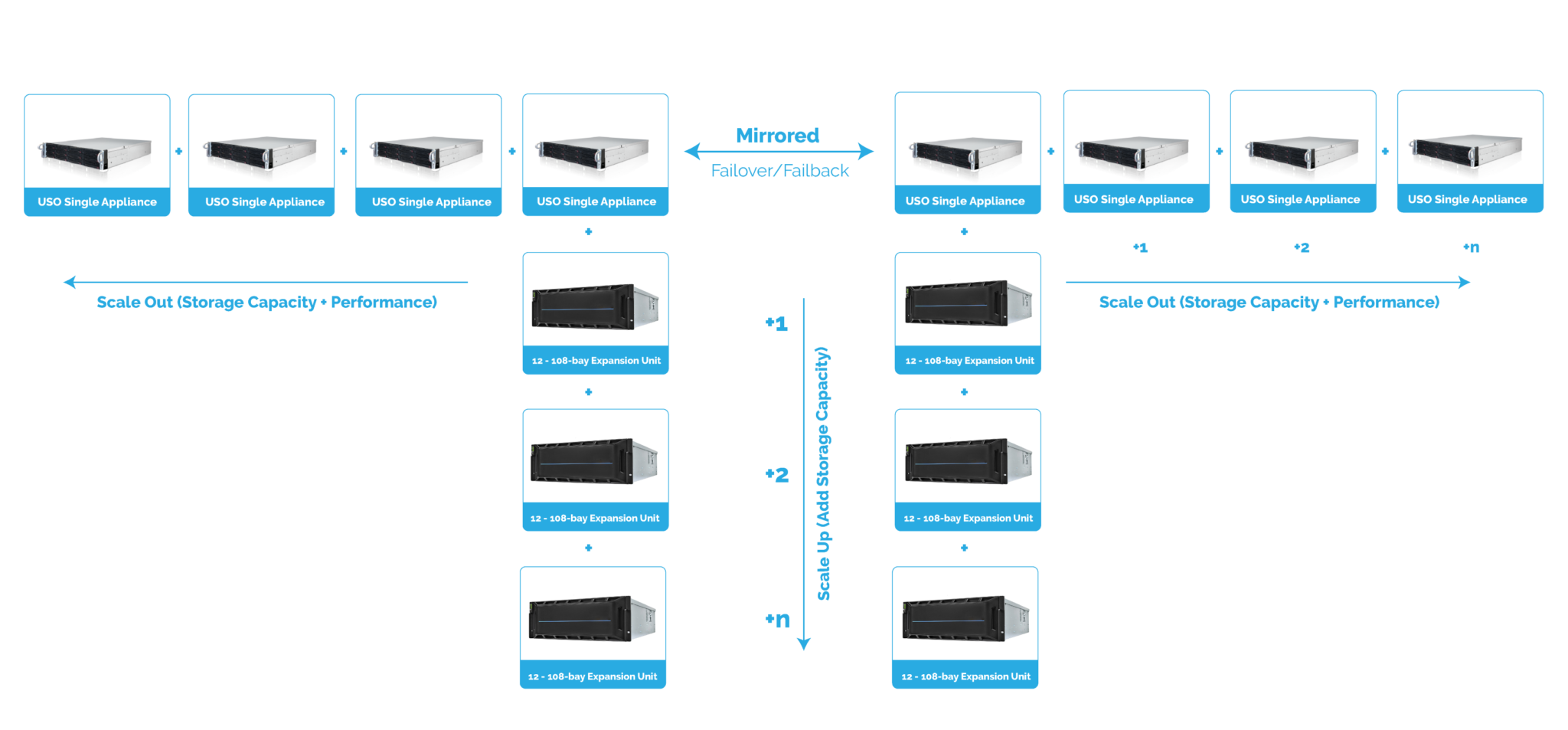
StoneFly Solutions with the Dual Node Shared Nothing Hardware
The Dual Node Shared Nothing hardware is available for all StoneFly data storage and backup & DR solutions.
Here’s a brief list of all StoneFly solutions with the Dual Node Shared Nothing hardware:
Enterprise-Tier Solutions:
- Super Scale Out (SSO™) NAS Appliances
- Integrated Storage Concentrator (ISC™) SAN Appliance
- Unified Scale Out (USO™) Unified Storage Appliance
- Unified Server & Storage (USS™) Hyperconverged Infrastructure (HCI)
- DR365™ Backup & DR Appliance – DR Site in a Box
- DR365V™ Backup & DR Appliance for Veeam
Value-Tier Solutions:
Conclusion
Business continuity has always been an important factor for every company and organization. In the digitally transformed world of today, speed really matters and there’s no room for disruption, delay, or downtime.
For businesses that cater to the most demanding requirements and processes that cannot go down, the Dual Node Shared Nothing hardware is the best choice.
Got Questions about the Dual Node Shared Nothing Hardware?
We’d love to answer your queries and help you out with your project. For all business related queries, contact us or schedule a demo.
Email: sales@staging.stonefly.com
Phone: +1 (510) 265 1616
Connect with Us on Our Social Media Channels
Twitter: @stoneflyinc.
Facebook: facebook.com/stoneflyinc
Youtube: youtube.com/stoneflyinc
Linkedin: linkedin.com/company/stonefly-networks
Listen to StoneCast – The Podcast about Enterprise Data Management Challenges & their Solutions
StoneFly Website: https://staging.stonefly.com/podcasts
Podbean: https://stoneflypodcast.podbean.com/
SoundCloud: https://soundcloud.com/stoneflypodcast







